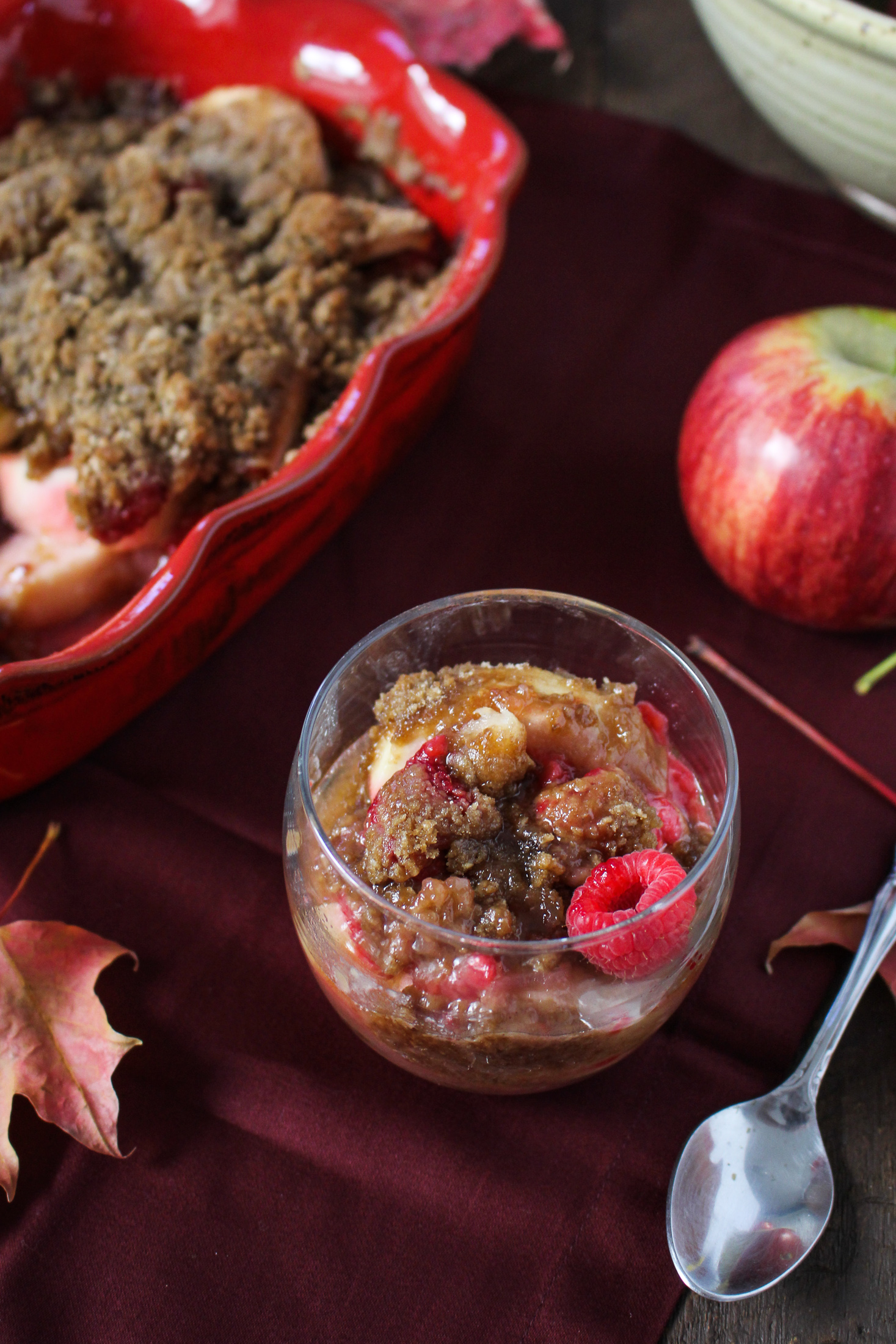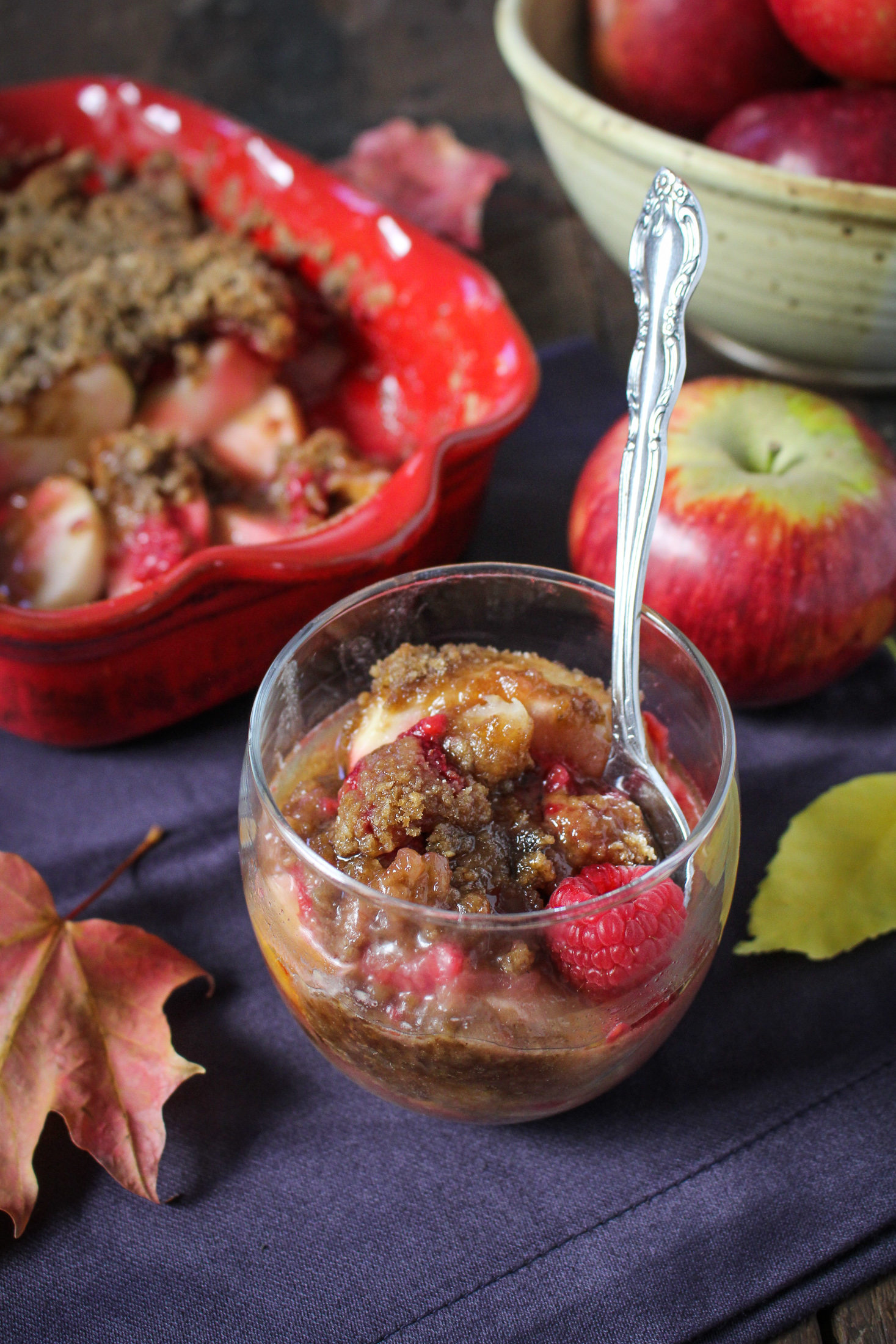Trevor and I have recently undertaken a very serious task – finding the perfect apple to grow in our front yard. After moving in, we quickly decided that we wanted nothing to do with the overgrown hedges creating a border between our tiny patch of lawn and the sidewalk, or with the constant maintenance they seem to require. The only thing I liked about them were the colorful snails they made a home for, and I think the snails just moved into our basement anyways. So we took the hedges down (I use the term “we” loosely, although this is one of the few house chores that I’ve actually contributed to) and chopped them up into little pieces and stuffed them into about a dozen lawn bags to be hauled away (ed note: that description sounds more sinister than I intended). And in their place, we decided to plant an apple tree.
Being able to plant a tree – a permanent, flowering, fruit-bearing tree – is one of the things that Trevor and I daydreamed about when we were looking for houses. Really, I think that someday we’ll end up on a farm in Vermont with an orchard and a little pond and baby goats running around, but for now, we have room for one tree. We’ve thoroughly scoped out the neighborhood and identified at least 4 different apple tree varieties within a quarter mile of our house, so pollination shouldn’t be an issue with a single tree. So now we just need to pick a variety. I initially proposed a Honeycrisp or a Pink Lady, but Trevor quickly established that whatever apple we chose, it needed to be heirloom, and it couldn’t be something that you could get at the grocery store. Apparently I live with an apple snob. So, we did the only logical thing there was – embarked on an apple tasting of all the varieties we could get our hands on.
So far, we’ve tasted 18 varieties – Mollie’s Sheepnose, Ginger Gold, Holstein, Franc Rombauer, Lamb Abbey Pearmain, Blondee, Zestar, Mollie’s Delicious, Paula Red, Wolf River, Melrose, Fortune, Snowsweet, Mutsu, Rhode Island Greening, Burgundy, Red Gravenstein, and Opalescent. It’s all very serious and scientific: I load up on apples at the farmer’s market, taking a picture of each apple next to the sign so I can remember which is which, then when I get home, we line them up on the counter with labels and cut slices and take notes. It’s dorky, maybe, but it’s totally fascinating how much variation there is in different apples – texture, flavor intensity, sweet-tart balance, skin thickness, color, juiciness, tannins, etc. We’re looking for an apple with a strong, unique flavor, that’s relatively crisp, and preferably thin-skinned. The front runners are Snowsweet, which has a really unique, strong, almost tropical flavor, Mutsu, which is intensely sweet and very crisp, and Burgundy, which may be the juiciest apple I’ve ever taken a bite of. But the decision is not made yet, and we’re not done tasting – if any of you have favorite apples that we should try, tell us!
When trying 8 to 10 apples at a time, you end up with a lot of half-eaten apples leftover. So I’ve been making a lot of applesauce and apple crisp, which I actually don’t really recommend using 8 different varieties of apples for because you end up with all kinds of textures and doneness. But all the apple crisp got me thinking about what makes a perfect apple crisp, which I basically consider to be my dad’s apple crisp. In my book, there should never be any oats in the topping, the apples should be thickly sliced and have minimal additions, and the ratio of apples to topping should be about 4:1, volume-wise. This crisp has all of that. It also has raspberries, because I realized with the first crisp that early apples and late raspberries both show up in late September, and are a beautiful pairing. So here you have it – an oat-free, brown sugar topped, raspberry-apple crisp, the happy result of trying too many apples and making too many apple crisps.
Like what you just read? Subscribe to Katie at the Kitchen Door in the box on the right, on Feedly or Bloglovin‘, or follow along on Facebook, Twitter, Pinterest, Instagram, or Google+. Thanks for reading!
Raspberry Apple Crisp
Topping recipe from Netcooks. Serves 4.
- 4 medium Cortland apples, peeled, cored, and cut into wedges
- 6 oz. fresh raspberries
- 2 TBS honey
- 1/2 c. brown sugar
- 1/2 c. flour
- 1/4 tsp cinnamon
- pinch of salt
- 1/2 stick (1/4 c.) cold butter
- Preheat oven to 350°F. In a medium bowl, toss the apples and raspberries with the honey, then transfer to a small casserole dish (that holds 1.5 or 2 quarts).
- In a small bowl, whisk together the brown sugar, flour, cinnamon, and salt. Cut the cold butter into small cubes and add to the topping mix. Use a pastry cutter or a fork to work the butter into the flour and sugar, until the mixture is coarse with the pieces of butter being no larger than peas. Sprinkle the topping evenly over the top of the crisp.
- Bake in preheated oven until apples are tender and juicy, and topping is browned and melted, about 45 minutes. Let cool slightly then serve with vanilla ice cream.







Adding raspberries to this crisp is a brilliant idea, and my favorite apple is honeycrisp!
I didn’t know Paula Red were heirloom apples as they are pretty common here. I like Ambrosia for eating and Northern Spy for cooking. Happy apple tasting. :)
I have tried and love the Mutsu,hard to find though.
Among the apples you listed trying, Fortune is about 100 years old, Lamb Abbey Pearmain dates to 1804 (a Newton Pippin seedling) Gravenstein is older, and Rambour Franc (AKA Summer Rambo, but can then be confused with a winter apple called Rambo) dates to 1535. All the others are varieties arising in the past 80 years, with the possible exception of the two Mollies, Curious you did not fell strongly about Lamb Abbey Pearmain. which is strongly flavored, albeit small (I have yet to have the pleasure.) If you want something that requires no sprays, may I suggest you try Winekist and Redfield, both red-fleshed apples. Winekist is an early and small fruit with deep color inside and is fairly tart out West (Spokane, WA.) Redfield is an October apple of goodly dimensions, pink inside and ought to make lovely pies and crisp (haven’t had enough on hand yet to verify other’s excitement.).Neither of these date before 1936. All around great apple for you to try? Maiden Blush, Colonial American, disease resistant, early, multi-use, beautiful – as the name suggests – and needs several pickings before all the fruit ripens. You might look up Wagener and seek that, as well.
David, what detailed information – thank you! We ended up planting an Espous Spitzenburg. It’s still a baby, so we have a few years to wait before trying out the apples. Have you ever had it? I’m going to keep my eyes peeled for the other apples you’ve listed as well; many of them are new to me. Cheers!
Yes, Esopus Spitzenburg (NY) grows at an orchard I know in central WA. I found it both times to be disappointing, perhaps because I ate it soon after picking. Next time I will keep it at least 4 weeks and see how it is.
One that may be hard for you to find is worth getting: Hunt Russet, 1750 Concord, Mass. I bought a bench graft of it from an orchard in Wisconsin and re-planted it this year so as to get a larger tree. (Burying the scionwood in soil prompts root growth from the bud wood, which will supersede the limiting root stock in a few years. I need more of these apples, thus, a bigger tree!) Anyway, out here Hunt yields a dense apple, high sugar (18 and 19 Brix) with balancing acid, so it seems moderately sweet. Flavors? Tangerine and a rose finish. Wow. Also keeps long.
Last year I grafted Lamb Abbey Pearmain to a nearly standard stock (Budagovsky118). It is growing slowly but doesn’t stop in our near-desert heat, so have high hopes for this apple.
This year I look forward to a first taste of both Claygate Pearmain and an ancient German apple: Edelborsdorfer. Each is bearing a single debut fruit. I got the Edelborsdorfer from Cummins and made the Claygate graft in ’16. I swap scions with folks all over the States.
BTW, you may already know that eastern Washington is in rain shadow – east of the Cascade mountains. Only 30 miles west of Spokane you descend into real desert, all the way to just this side of the mountain range. 15% humidity is typical all summer, and this summer there were 26 days of 90F or more.
Hope Spitz works well for you!